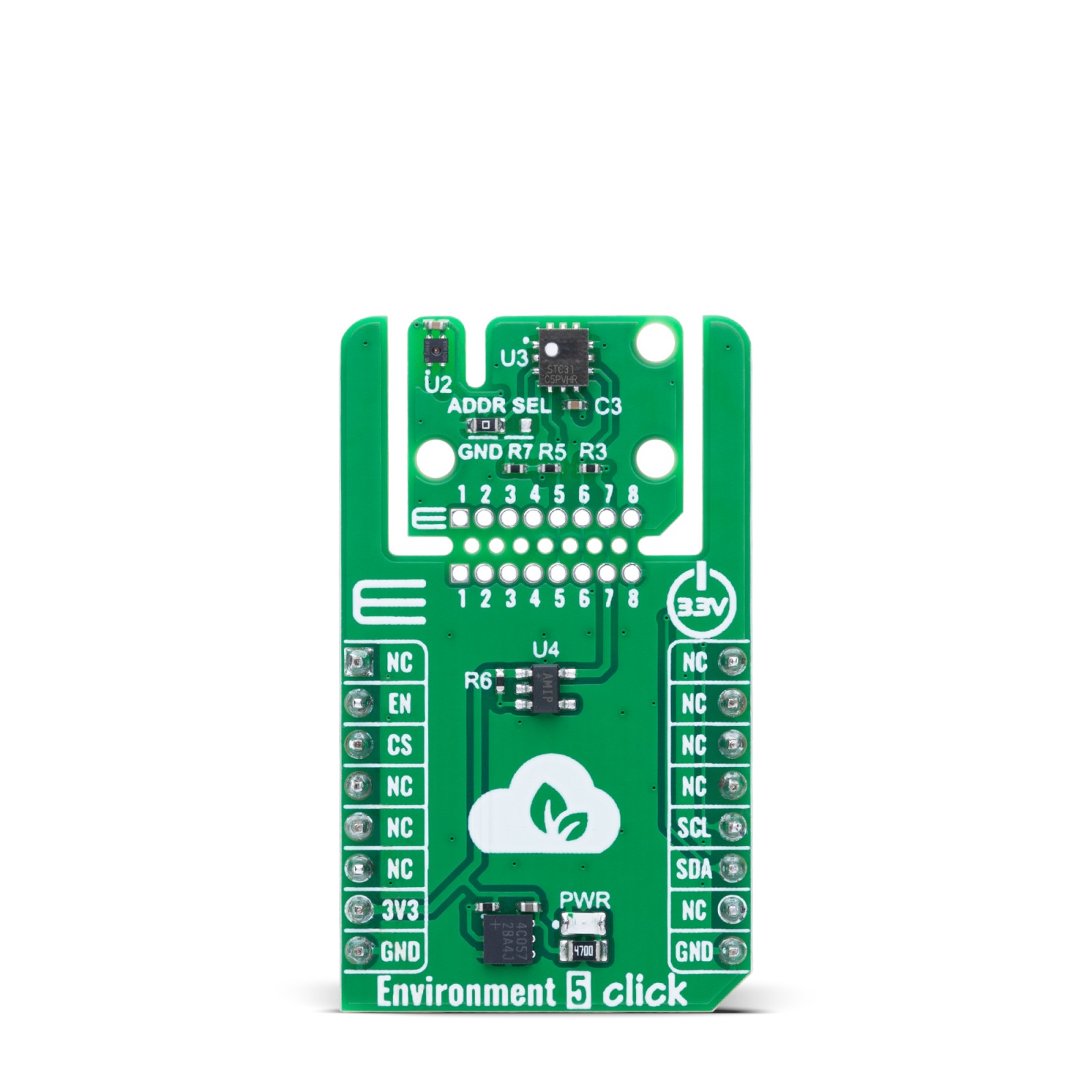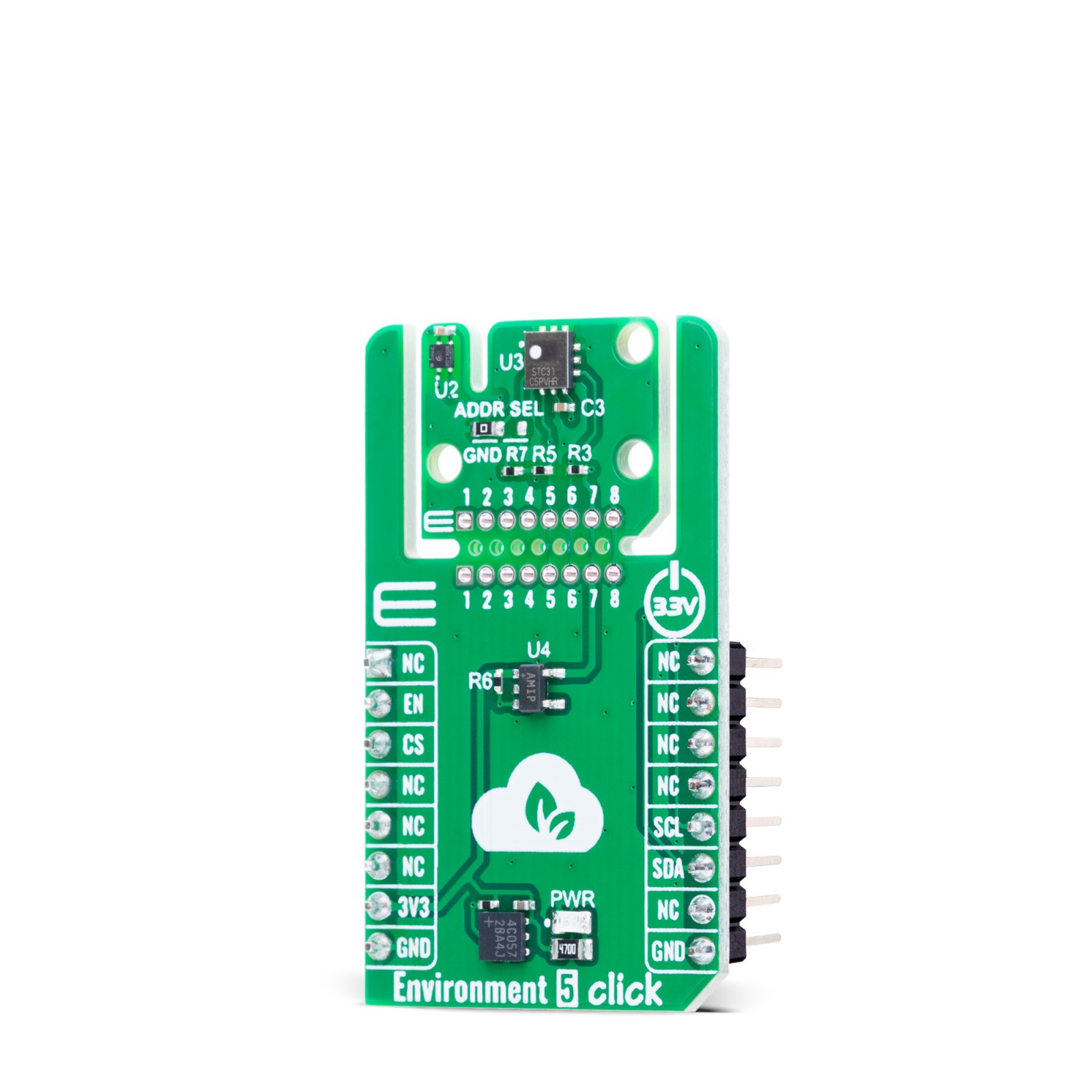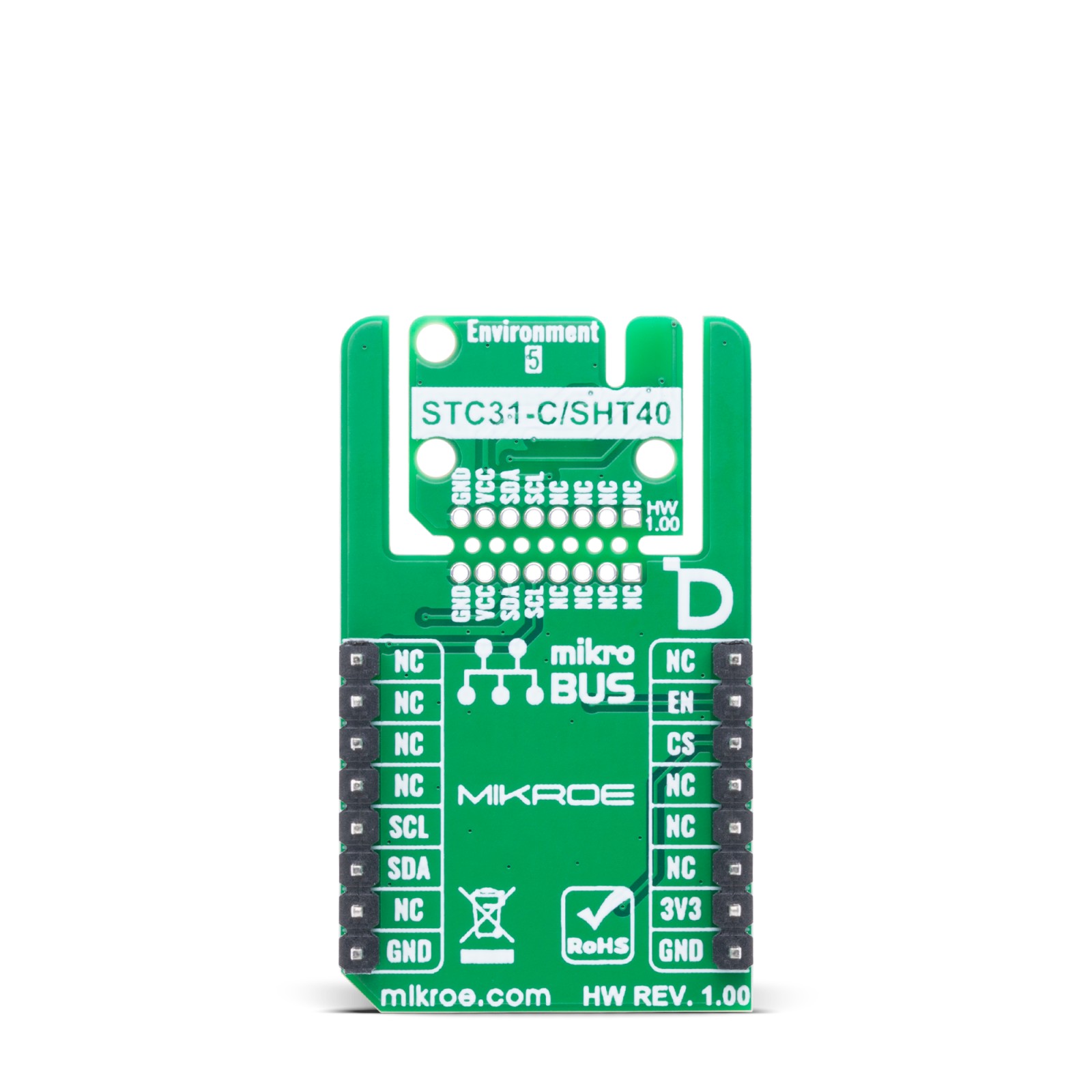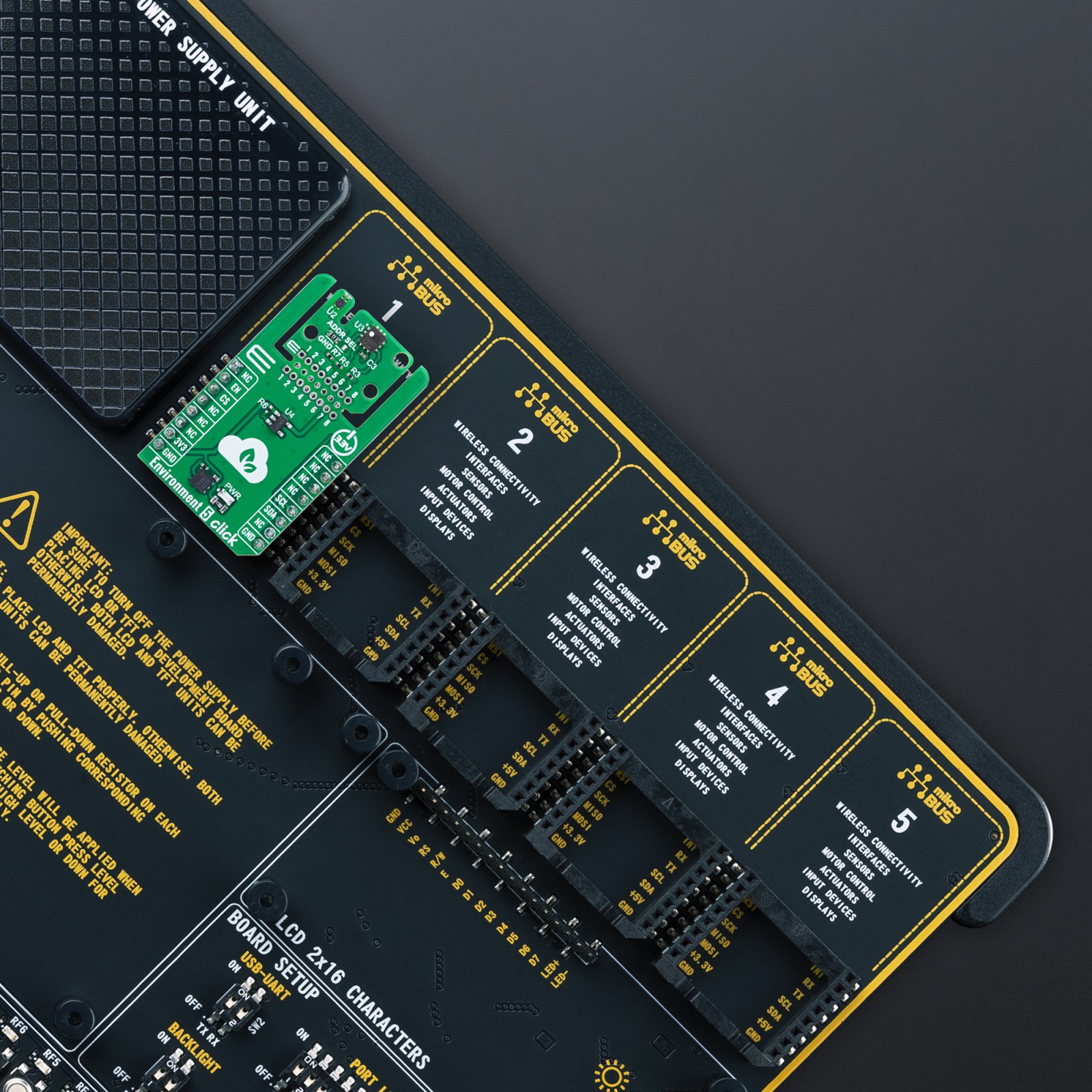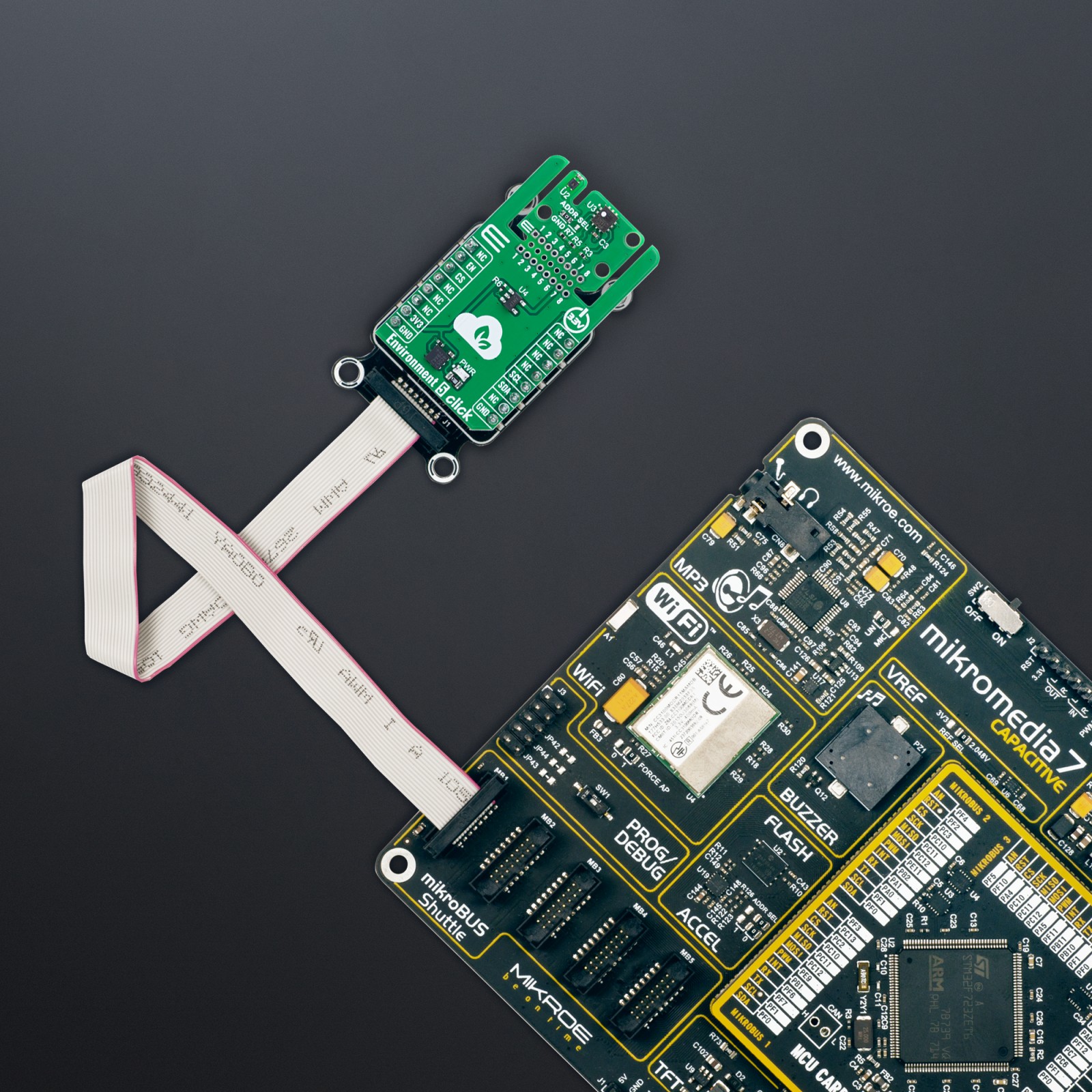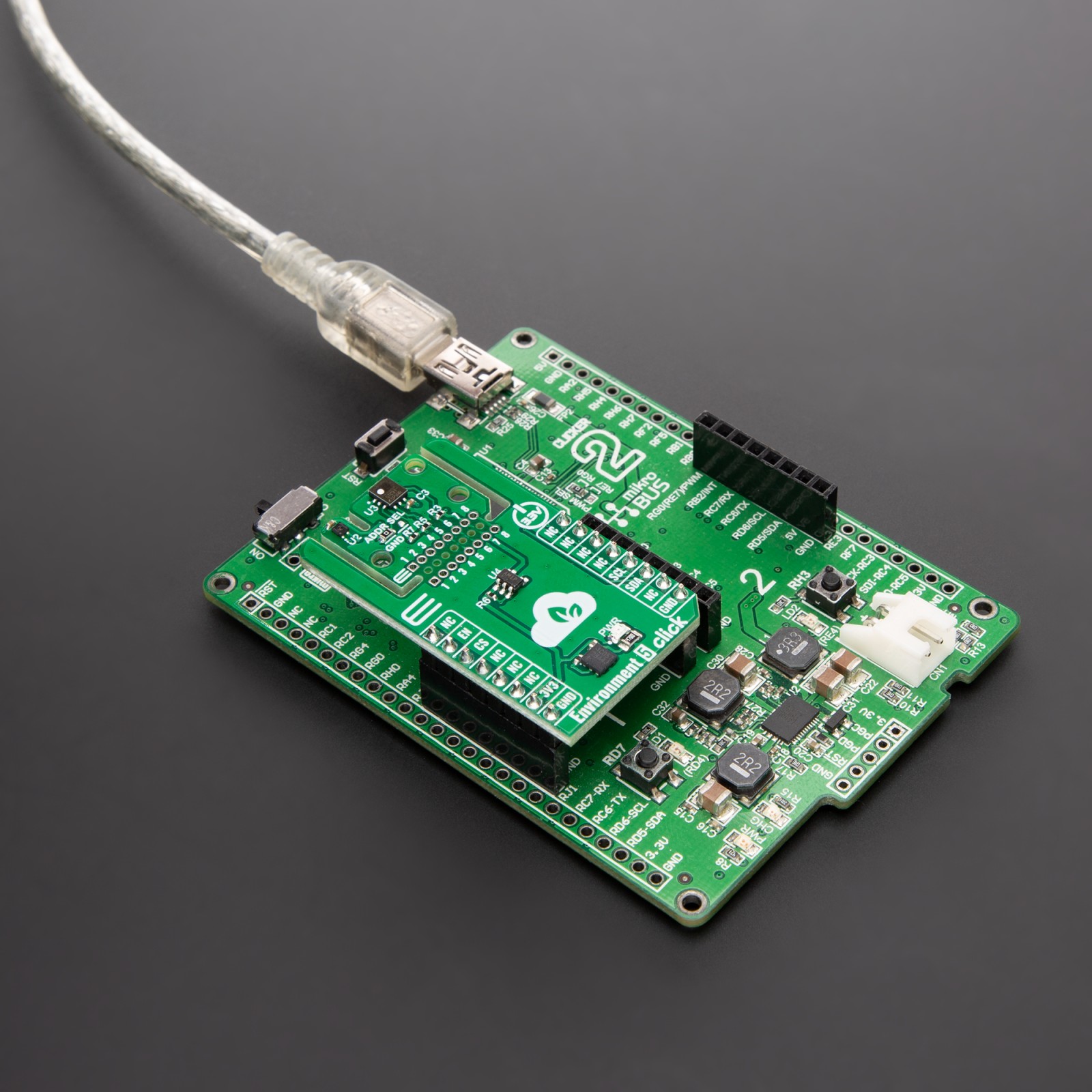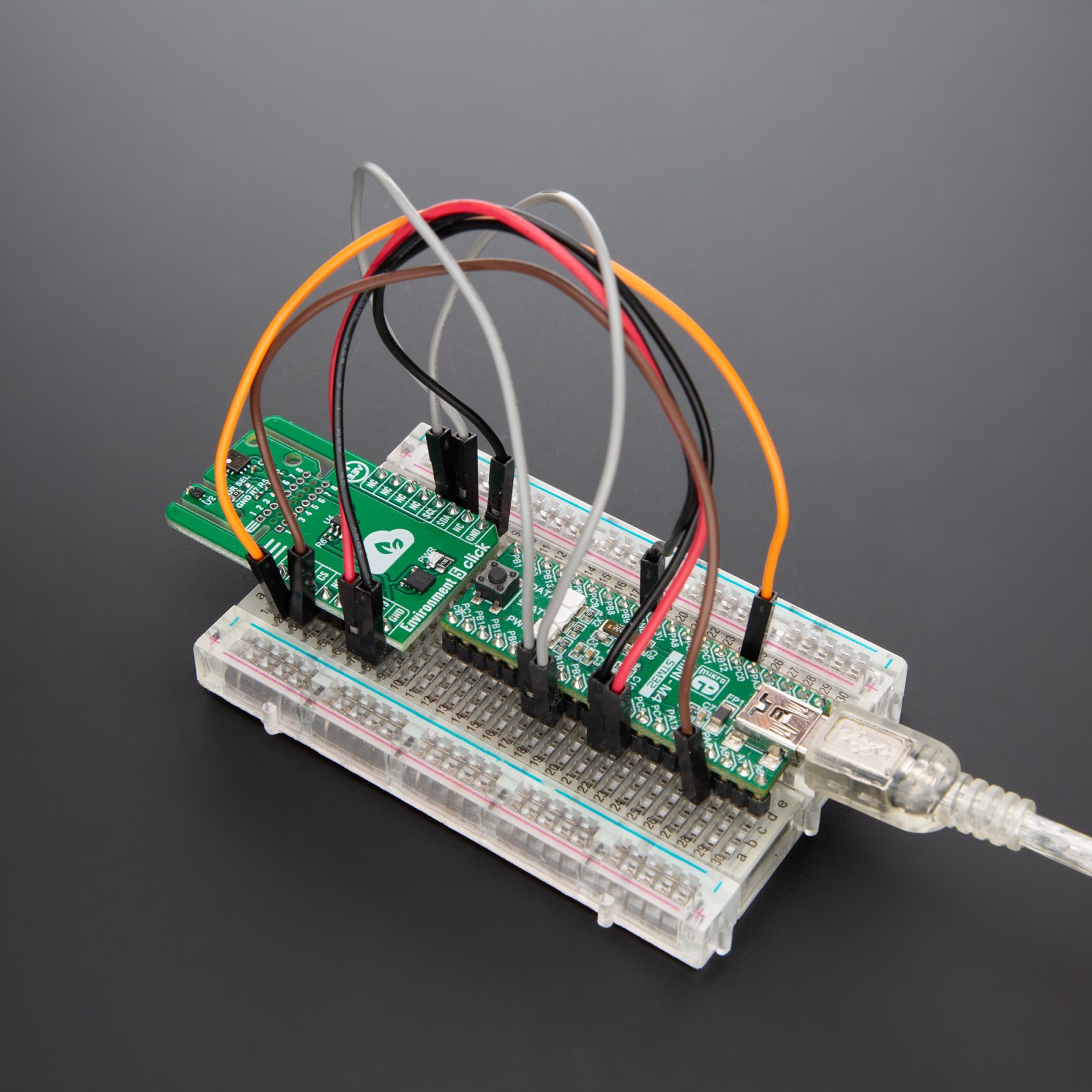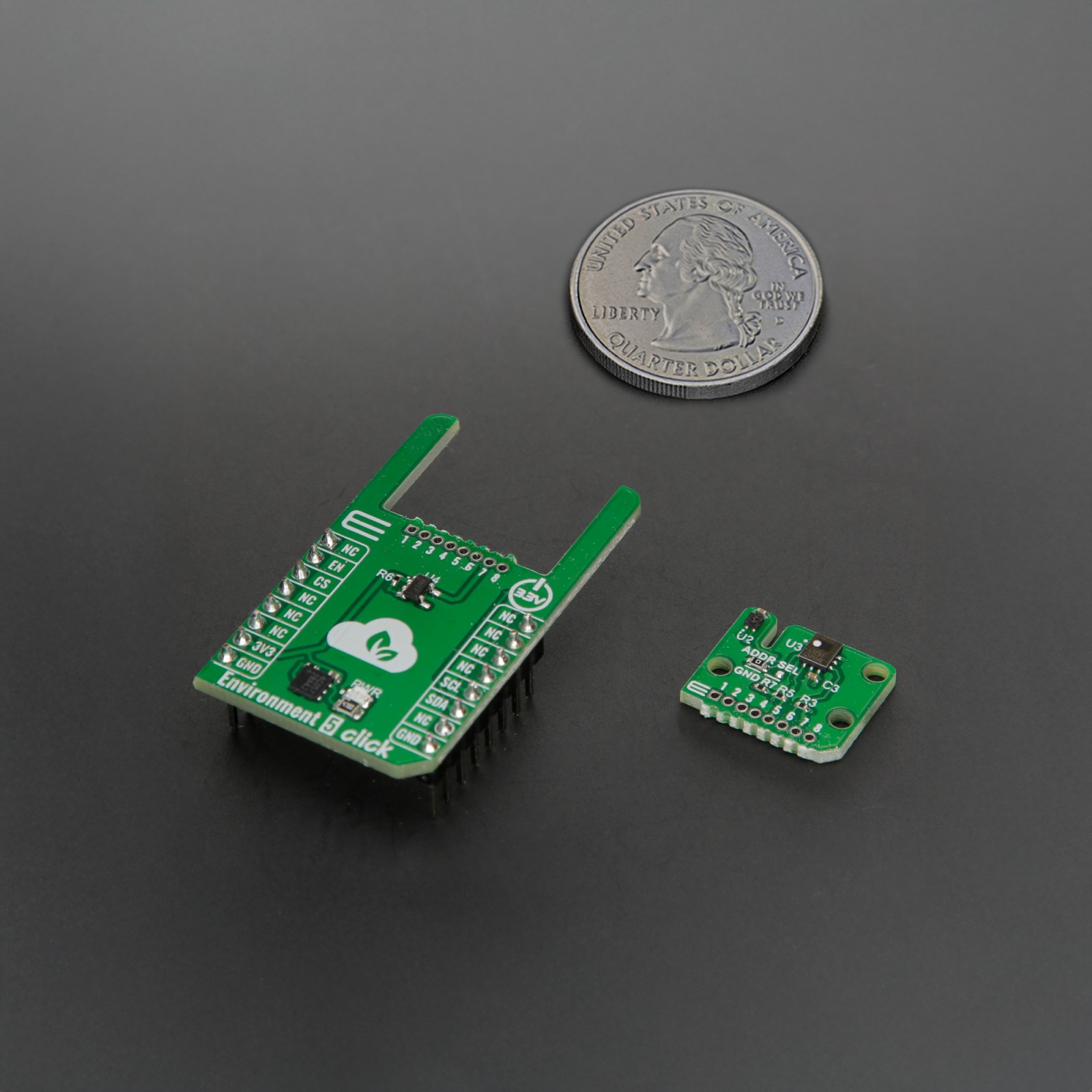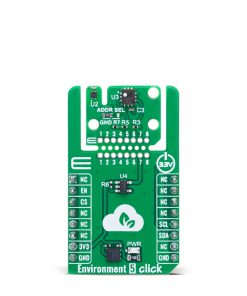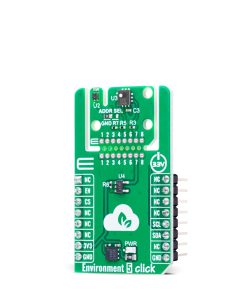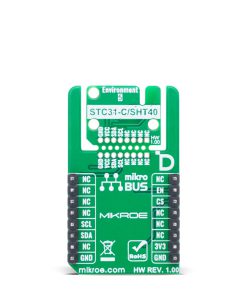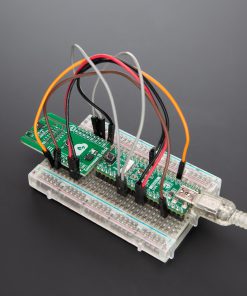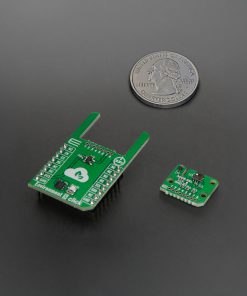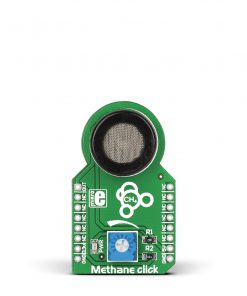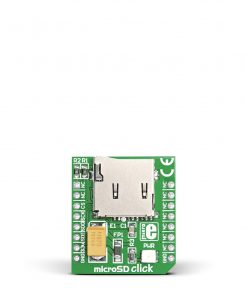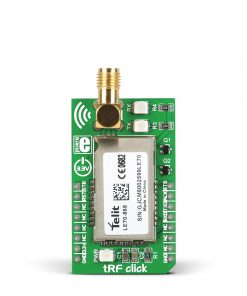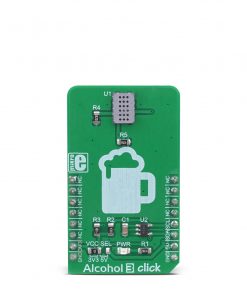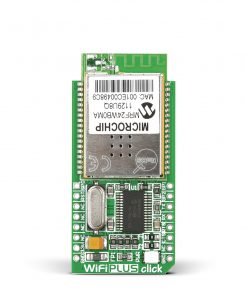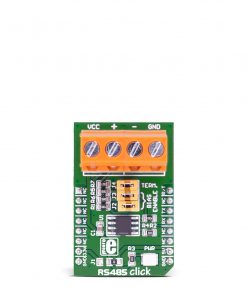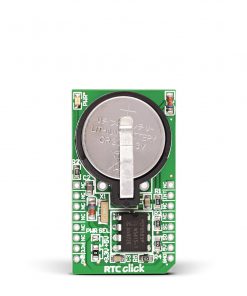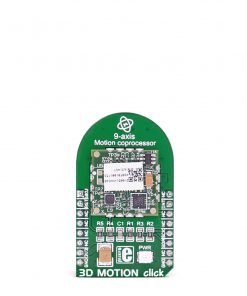Environment 5 Click is a compact add-on board designed to measure temperature, humidity, and CO₂ levels with high precision. It is based on two high-performance sensors from Sensirion: the SHT40-BD1B for humidity and temperature, and the STC31-C for carbon dioxide concentration. Featuring a low power design, wide operating ranges, and excellent long-term stability, this Click board ensures reliable data acquisition even in battery-powered or space-constrained applications. It supports I2C communication and introduces the innovative Click Snap feature for flexible sensor placement. Ideal for smart buildings, HVAC systems, and indoor air quality monitoring, Environment 5 Click delivers accurate and efficient environmental sensing in a compact form factor.
Environment 5 Click is fully compatible with the mikroBUS™ socket and can be used on any host system supporting the mikroBUS™ standard. It comes with the mikroSDK open-source libraries, offering unparalleled flexibility for evaluation and customization. What sets this Click board™ apart is the groundbreaking ClickID feature, enabling your host system to seamlessly and automatically detect and identify this add-on board, alongside a Click Snap feature introducing a new level of flexibility and ease of use.
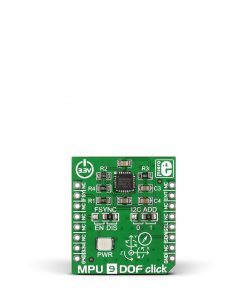 MPU 9DOF Click
1 × R550.00
MPU 9DOF Click
1 × R550.00 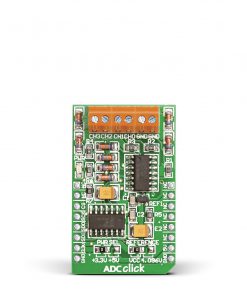 ADC Click
1 × R540.00
ADC Click
1 × R540.00 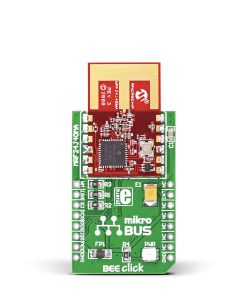 BEE Click
1 × R800.00
BEE Click
1 × R800.00 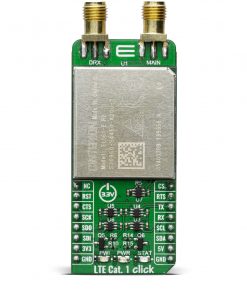 LTE Cat.1-EU Click (for Europe)
1 × R2,500.00
LTE Cat.1-EU Click (for Europe)
1 × R2,500.00 
